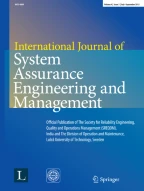Abstract
Water cycle algorithm (WCA) is a relatively new bio-inspired algorithm in the field of wireless sensor networks (WSN). In this work WCA has been applied independently to three energy models of WSN, with a view to optimize the energy spent on data communication in the nodes. By taking different sets of node population sizes, the energy performance is analyzed from the point of view of the percentage reduction of energy depleted, and the number of iterations needed to achieve the optimum value. Based on the simulation results, some salient trends are commented upon. The implementation renders an energy reduction of up to 46.24% in the sensor nodes, which is a promising outcome, and must be investigated further.
Similar content being viewed by others
References
Abo-zahhad M, Amin O, Farrag M, Ali A (2014) Survey on energy consumption models in wireless sensor networks. Open Trans Wirel Commun 1:1–17
Anastasi G, Conti M, Di M, Passarella A (2009) Energy conservation in wireless sensor networks: a survey. Ad Hoc Netw 7:537–568. https://doi.org/10.1016/j.adhoc.2008.06.003
Basaran C, Kang K (2009) Quality of Service in Wireless Sensor Networks. Springer, London, pp 305–321. https://doi.org/10.1007/978-1-84882-218-4_12
Demigha O, Hidouci W, Ahmed T (2013) On energy efficiency in collaborative target tracking in wireless sensor network: a review. IEEE Commun Surv Tutor 15:1210–1222. https://doi.org/10.1109/SURV.2012.042512.00030
Eskandar H, Sadollah A, Bahreininejad A, Hamdi M (2012) Water cycle algorithm—a novel metaheuristic optimization method for solving constrained engineering optimization problems. Comput Struct 111:151–166. https://doi.org/10.1016/j.compstruc.2012.07.010
Heinzelman WB, Chandrakasan AP, Member S, Balakrishnan H (2002) An application-specific protocol architecture for wireless microsensor networks. IEEE Trans Wirel Commun 1:660–670. https://doi.org/10.1109/TWC.2002.804190
Jha SK, Eyong EM (2018) An energy optimization in wireless sensor networks by using genetic algorithm. Telecommun Syst 67:113–121. https://doi.org/10.1007/s11235-017-0324-1
Karahan A, Erturk I, Atmaca S, Cakici S (2014) Effects of transmit-based and receive-based slot allocation strategies on energy efficiency in WSN MACs. Ad Hoc Netw 13:404–413. https://doi.org/10.1016/j.adhoc.2013.09.001
Karim F, Zeadally S (2016) Energy harvesting in wireless sensor networks: a comprehensive review. Renew Sustain Energy Rev 55:1041–1054. https://doi.org/10.1016/j.rser.2015.11.010
Mini RAF, Loureiro AAF (2009) Energy in wireless sensor networks. In: Garbinato B, Miranda H, Rodrigues L (eds) Middleware for network eccentric and mobile applications. Springer, Berlin, pp 3–24. https://doi.org/10.1007/978-3-540-89707-1_1
Norouzi A, Zaim AH (2014) Genetic algorithm application in optimization of wireless sensor networks. Sci World J. https://doi.org/10.1155/2014/286575
Pantazis NA, Nikolidakis SA, Vergados DD, Member S (2013) Energy-efficient routing protocols in wireless sensor networks: a survey. IEEE Commun Surv Tutor 15:551–591. https://doi.org/10.1109/SURV.2012.062612.00084
Peiravi A, Mashhadi HR, Javadi SH (2013) An optimal energy-efficient clustering method in wireless sensor networks using multi-objective genetic algorithm. Int J Commun Syst 26:114–126. https://doi.org/10.1002/dac.1336
Raghunathan V, Schurgers C, Park S, Srivastava MB (2002) Energy-aware wireless microsensor networks. IEEE Signal Process Mag 19:40–50
Rawat P, Deep K, Chaouchi H, Marie J (2014) Wireless sensor networks : a survey on recent developments and potential synergies. J Supercomput 68:1–48. https://doi.org/10.1007/s11227-013-1021-9
Raza U, Bogliolo A, Freschi V et al (2016) A two-prong approach to energy-efficient WSNs: wake-up receivers plus dedicated, model-based sensing. Ad Hoc Netw 45:1–12. https://doi.org/10.1016/j.adhoc.2016.03.005
Snajder B, Jelicic V, Kalafatic Z, Bilas V (2016) Wireless sensor node modelling for energy efficiency analysis in data-intensive periodic monitoring. Ad Hoc Netw 49:29–41. https://doi.org/10.1016/j.adhoc.2016.06.004
Wsns SL, Chidean MI, Morgado E et al (2016) Energy efficiency and quality of data reconstruction through data-coupled clustering. IEEE Sens Netw 16:5010–5020. https://doi.org/10.1109/JSEN.2016.2551466
Yick J, Mukherjee B, Ghosal D (2008) Wireless sensor network survey. Comput Netw 52:2292–2330. https://doi.org/10.1016/j.comnet.2008.04.002
Younis M, Akkaya K (2008) Strategies and techniques for node placement in wireless sensor networks: a survey. A d Hoc Netw 6:621–655. https://doi.org/10.1016/j.adhoc.2007.05.003
Zeng B, Dong Y (2016) An improved harmony search based energy-efficient routing algorithm for wireless sensor networks. Appl Soft Comput J 41:135–147. https://doi.org/10.1016/j.asoc.2015.12.028
Zhang H, Zhang S, Bu W (2014) A clustering routing protocol for energy balance of wireless sensor network based on simulated annealing and genetic algorithm. Int J Hybrid Inf Technol 7:71–82
Acknowledgements
The fourth author wishes to acknowledge the MHRD, Govt. of India Scholarship Council for supporting his research work.
Author information
Authors and Affiliations
Corresponding author
Additional information
Publisher's Note
Springer Nature remains neutral with regard to jurisdictional claims in published maps and institutional affiliations.
Rights and permissions
About this article
Cite this article
Tiwari, S., Kumar, G., Raj, A. et al. Water cycle algorithm perspective on energy constraints in WSN. Int J Syst Assur Eng Manag 11, 253–260 (2020). https://doi.org/10.1007/s13198-019-00784-y
Received:
Published:
Issue Date:
DOI: https://doi.org/10.1007/s13198-019-00784-y
